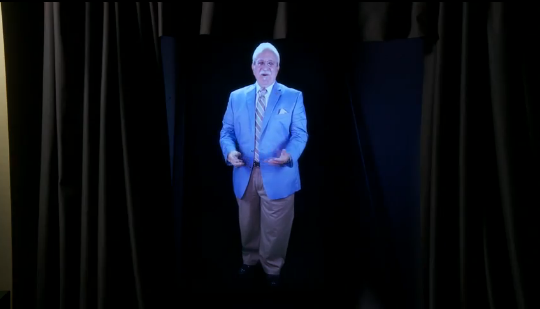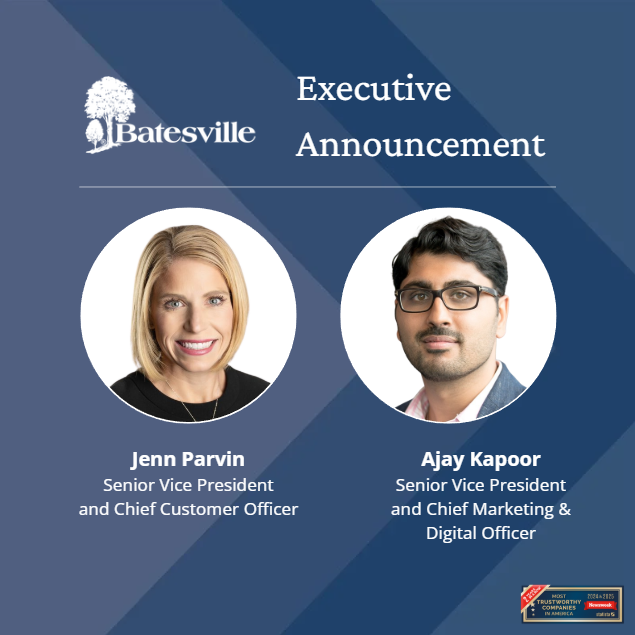How You Can Attend Your Own Funeral
Article by Jim Gold, Daily Finance
If you’re just dying to have the last word about yourself forever, here’s an option: Deliver your own eulogy at your own funeral — via hologram.
Speaking about yourself for all of eternity through a moving, life-size 3D image is just one of the latest ways holograms, once the purview of science fiction, are popping up in our everyday lives.
The virtual you could deliver your eulogy while sitting in front of your fireplace with your golden retriever and a pipe, in front of your alma mater, in your sailboat or at the wheel of your favorite car, he says. Adding: “Really, your imagination is the only limitation to what can really happen.”
And if you’re not interested in a funeral hologram, AIM also targets families crafting loving life legacies, nonprofits honoring donors, luxury resorts impressing guests, and sales staffs making retail presentations. “We offer high-wealth clientele the opportunity to create lasting life legacies and powerful impressions,” says AIM.
Video Eulogies
Equipment as small as an iPod to play the holograms starts around $2,000, and a lifelike capsule will run about $50,000, Minardo told WPBF-TV of West Palm Beach, Florida. A stage-size player will cost more than $300,000, he told Money Talks News. Minardo describes the devices as time capsules that are “not buried but alive and in your home.”
Video eulogies recorded before people die have been used for years, says Jeff Staab, owner of Cremation Solutions in Arlington, Vermont. “A hologram will provide a lifelike version of the person and make it seem like they are almost in the room at the funeral,” Staab recently blogged. Some find that endearing; others, creepy.
AIM uses a simpler version of what brought Michael Jackson seemingly back to life to perform at the 2014 Billboard Music Awards. Technically “holographic illusions” rather than holograms, the likenesses of Jackson and Tupac Shakur’s “performance” at Coachella in 2012, were created with high-tech versions of an old magician’s trick known as “Pepper’s Ghost,” a 2D effect using a mirror and projector.
As predicted in 1989’s “Back to the Future II,” when Marty McFly thought he was about to be eaten by a projection of a shark promoting “Jaws 19,” 3D holograms using photo projection are here.
“While there is still work to be done, the prospect is of 3D images seemingly leaping out of the screens, thus promising a total immersion of real and virtual worlds without the need for cumbersome accessories such as 3D glasses,” says Dr. Qin Li, from the Queensland Micro- and Nanotechnology Centre at Griffith University School of Engineering in Australia.
Li was part of a team of scientists who tweaked graphene, a one-atom-thick carbon, to create full-color, pop-up, floating 3D displays that can be viewed without glasses. Though the images the team created were only 1 centimeter in height, scaling up would be easy, according to their study, published April 22 in “Nature.”
In Other Hologram News
- Virtual protests: On April 11 a horde of holographic figures holding placards staged a protest at the Parliament building in Madrid. Organized by the group Holograms for Freedom, the ghostly mob was a statement of opposition to a Spanish law cracking down on real demonstrators at government buildings. In reality, director Esteban Crespo days early filmed just 50 protesters in a town outside Madrid. Crespo told The New Yorkerhe carefully reproduced distances and angles so the holograms would line up when projected in Madrid.
- Medical advances: The FDA recently approved a software platform called True3D Viewer, developed by California startup EchoPixel for use in diagnostics and surgical planning, Wired reported. Rather than 3D images displayed on flat screens from data gathered with CT scans, MRIs, ultrasound or other devices, EchoPixel creates a virtual body part in 3D space, allowing doctors to move it, zoom in on it and manipulate it. Other companies’ hologram projects include virtual bodies in which medical students can see through layers of skin to the muscular, cardiovascular and skeletal systems; digital real-time updates of patients’ organs that surgeons could view during operations; and super-powered microscopes that create detailed stereoscopic images of microbial and cellular life.
- Drive time: Imagine you’re behind the wheel, and all the information from your smartphone apps and dashboard instruments is projected right in front of you. Swiss innovator WayRay’s Navion, due out later this year, mounts on your dashboard and projects all that information right onto your windshield. No squinting at tiny maps, the company says. When the car is stopped, Navion works with smartphones so you may make calls and access email and social networks. You can give orders to Navion with hand gestures.
- Windows computing: Microsoft in January unveiled HoloLens, a headset operating as a holographic computer with no wires, phones or connection to a PC needed. HoloLens features see-through holographic high-definition lenses and spatial sound so you can pinch, pull, tap and flick away holograms. Advanced sensors, a next-generation system on a chip and a Holographic Processing Unit will sift terabytes of data to understand what you are doing and the world around you. Microsoft says it will bring Xbox gaming to HoloLens. The wearable device also is expected to transform medical training and patient care.




